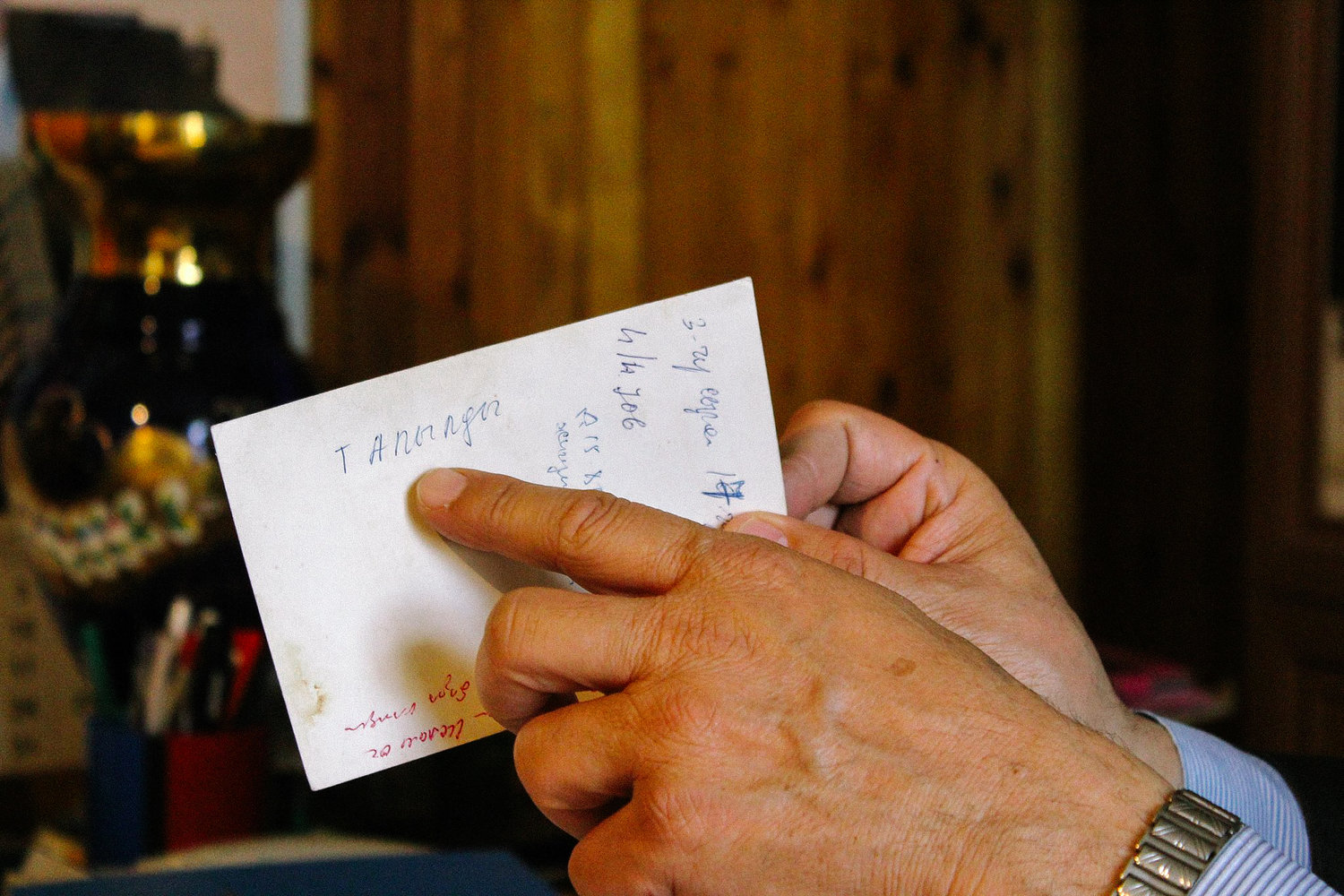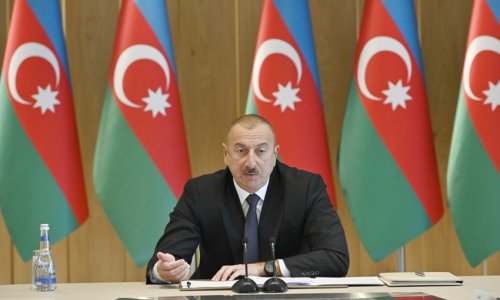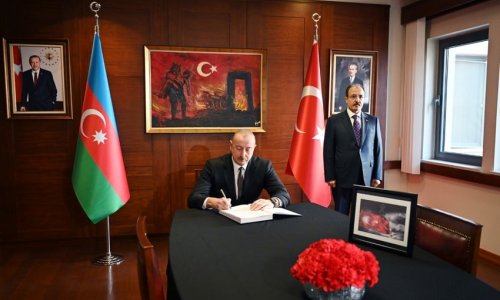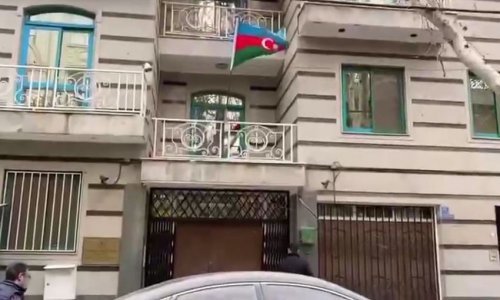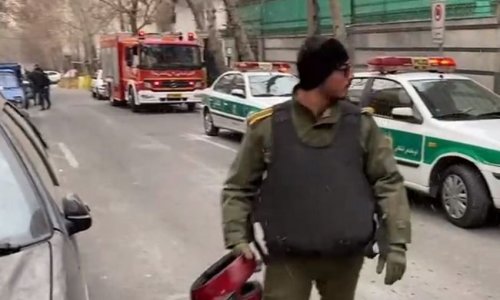By
Seymur Kazımov
Thirty-five-year-old Azerbaijani tractor driver Elshad Alakbarov still remembers the day he lost his father. It was June 15, 1992,
amidst
full-fledged conflict over nearby Nagorno Karabakh. Alakbarov was 10 years old.
"My mother had
cooked
khangal [an Azerbaijani pasta dish], my father had just started to eat it, and the bus [for volunteer fighters] came for him. He left and never came back."
Only 67 of the estimated 420 volunteer militia survived that day’s attack on the Agdara regional village of Sirxavand, on Karabakh’s eastern side, recalls Alakbarov’s uncle, Hidayat Mustafaev, who was among the fighters. Mubariz Alakbarov, a 36-year-old tractor driver from the village of
Kichikli , to the east in Agdam, was one of 15 men injured.
"I bandaged his arm and put him in a car,” Mustafayev, 62, says.
Amidst
intense fighting , the car, apparently hit by a projectile, exploded and crashed. "When we reached the car, we could not find anyone."
Alakbarov now numbers among the 3,127 Azerbaijani servicemen whose whereabouts, nearly 24 years after the Karabakh cease-fire, remain unknown, according to the State Commission on Prisoners, the
Missing
and Hostages. Soldiers account for the vast majority of the registered missing.
Overall, the International Committee of the Red Cross estimates that some 4,500 Azerbaijanis and Armenians disappeared since
1992, when large-scale fighting began, but cautions that the information is not exact.
Entrepreneur Zahid Aliyev, whose 36-year-old brother, Tahir, a sergeant, disappeared a few months after Alakbarov, claims volunteer fighters "were in touch with the Armenians through a portable radio.”
Tahir Aliyev disappeared after fighting on September 4,
1992 over the village of Abdal
Gulabli in the region of Agdam, bordering Karabakh.
Members of Aliyev’s staff, positioned outside Abdal
Gulabli , last saw him with an injured arm before Azerbaijanis lost control of the village.
"Two soldiers told us about his injuries,” Zahid Aliyev, 55, says. "Then, what happened to him, we do not know. "
To find out what had happened to his brother, the father of four children, Aliyev attended meetings with Armenian volunteer fighters four times in Chartaz, a village east of Karabakh in the Khojavend district.
Ironically, before his disappearance, Tahir Aliyev himself, who spoke Armenian, had "repeatedly taken captive Armenian servicemen and exchanged them for Azerbaijani prisoners,” his brother claims.
That past did nothing to facilitate matters.
"Once, [the Armenians] said that my brother was their hostage; at the second meeting, that he was dead and that they held his corpse and asked for money in order to return it.”
Aliyev took "a lot of Russian rubles” to a third meeting and, with others, "the bodies of several” slain Armenians. His brother’s body, though, was not among those Azerbaijani corpses brought to that meeting.
In the case of Mubariz Alakbarov, the volunteer fighters had Armenian captives to offer in exchange, Mustafayev adds, but, similarly, nothing worked out.
"I don’t believe he will come back," Alakbarov’s mother, says of her husband in a low voice.
Establishing the chronology of a missing person’s life can be key to identifying his or her fate, comments Avaz Hasanov, who served as the Azerbaijani representative on a German non-profit, the International Working Group for the Release of Prisoners and Hostages and the Tracing of Missing Persons of the Karabakh Conflict, investigating these cases.
"Sometimes we were in military units, detention facilities, to clarify the data. We were also clarifying the information from people by visiting the villages,” Hasanov elaborates. "Unfortunately, our searches sometimes did not produce positive results since clerical work in the early years of the war was poorly done and the maps of the territories changed several times.”
Working in Armenia and Karabakh as well, Hasanov’s group has been able to find "a few missing bodies” over the past few years and return them to their families.
Other families’ longing for lost loved ones can expose them to questionable claims. Ten years ago, Elshad Alakbarov’s family got word that an Azerbaijani woman had seen Mubariz Alakbarov alive and working in a carpet factory in Iran. The woman, unacquainted with the family, claimed that he had given her a letter for them, but it never materialized. The carpet factory’s Baku office had no further information.
To honor his father, Alakbarov has named one of his own sons Mubariz, which means "fighter.’
Ramazan Huseynov, a cleric in the western city of Barda’s Juma mosque, understands from firsthand experience the importance of accurate clues for finding missing people like Mubariz Alakbarov.
During the Karabakh conflict, many unidentified corpses were brought to his mosque.
"Before I buried them, I took photos of them,” Huseynov says. "I wrote on the back of the picture the grave number and some distinguishing mark about the buried person -- for example, about tattoos, or birthmarks on the face and so on. Then, we hung those photos from the wall [inside the mosque]. When the families of the deceased recognized the photographed martyrs, we opened the tomb and handed the body over to them. "
Such a discovery, however, still eludes 74-year-old Surkhay Quliyev, a resident of the Agdam region’s Uchoglan village.
Guluev lost two sons during the Karabakh conflict: 20-year-old Tahir, a soldier, disappeared in 1993 after last being seen in the nearby village of
Khramord ; 19-year-old Rafael was killed a year later.
Before his death, Rafael Quliyev had pledged alms to Islamic shrines to hasten the safe return of his brother. Surkhay Quliyev now keeps this money at home, in memory of his two sons.
"Looking from our house, you can see the village where my son, Tahir, went missing, and I'm looking at that village every morning,” Quliyev says. "People are not found, but they will never be forgotten.”
www.chai-khana.org/en/azerbaijans-missing-in-action-not-found-but-never-forgotten
(Chai khana)
www.anews.az
Follow us !

